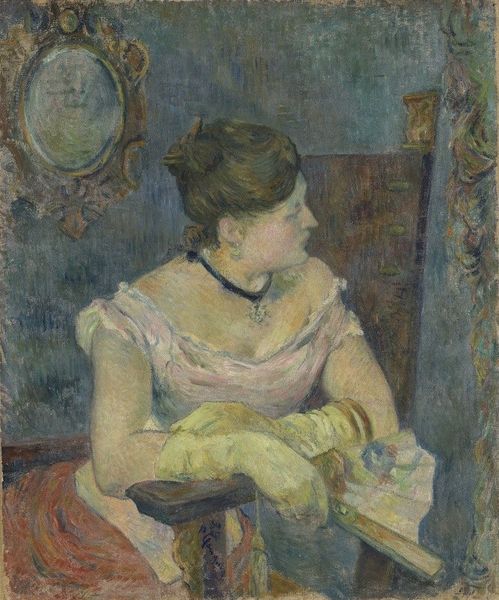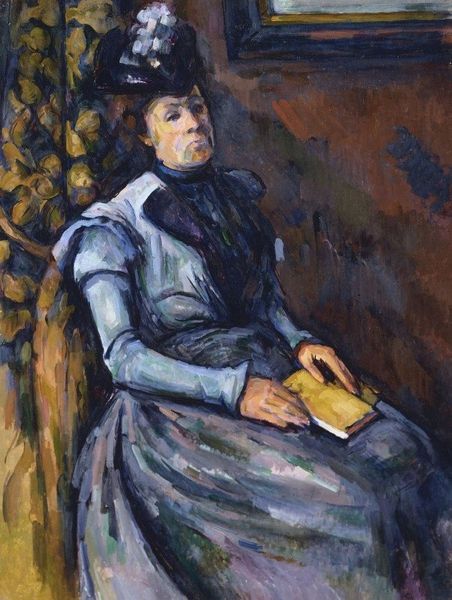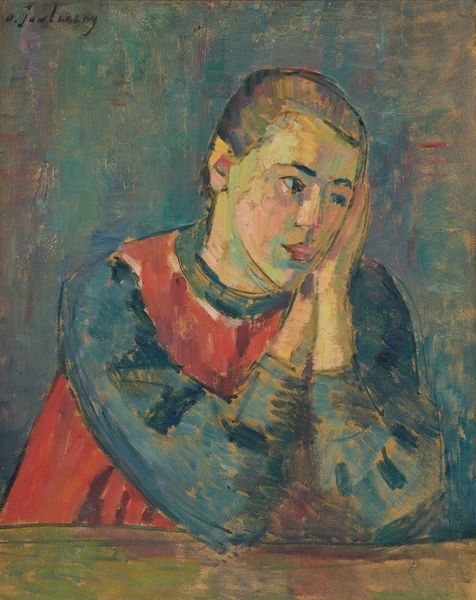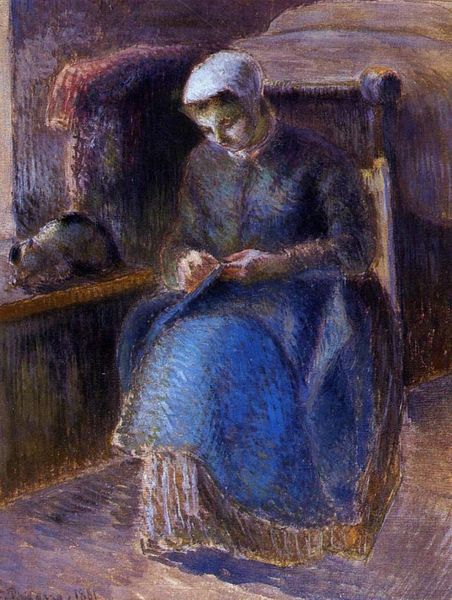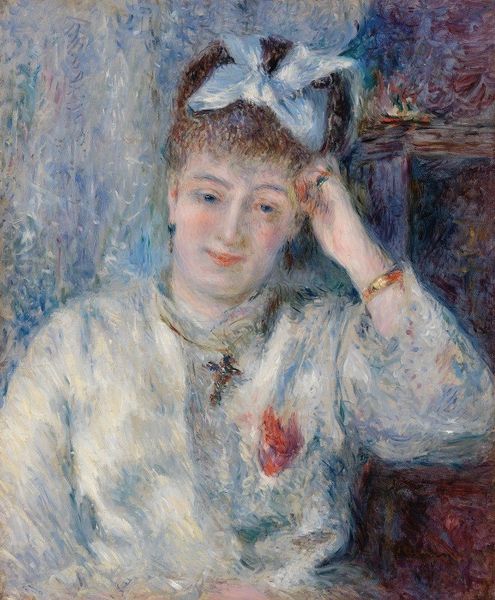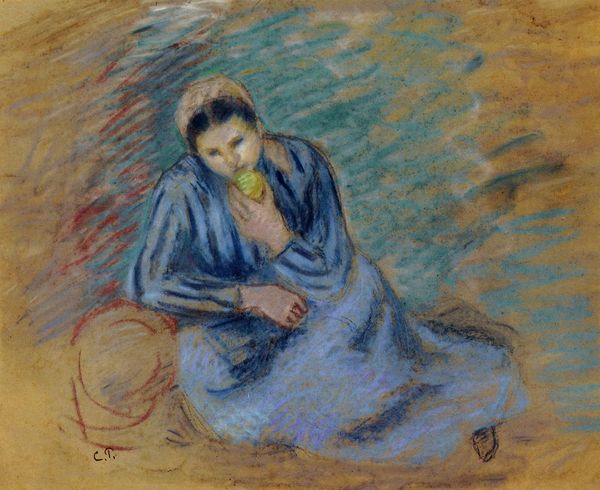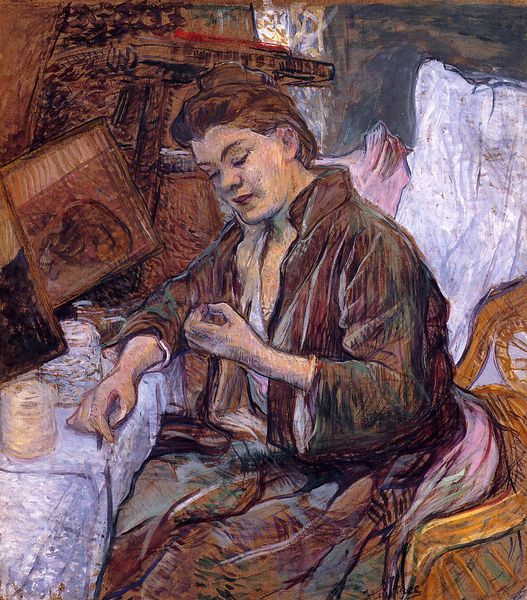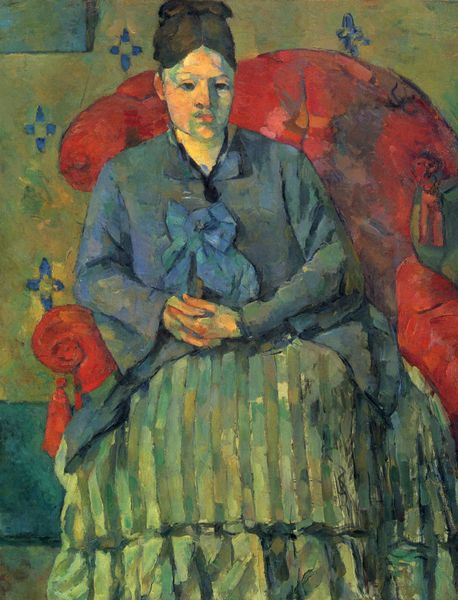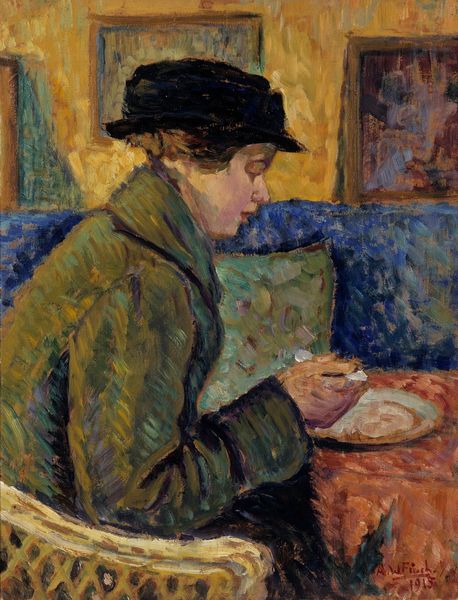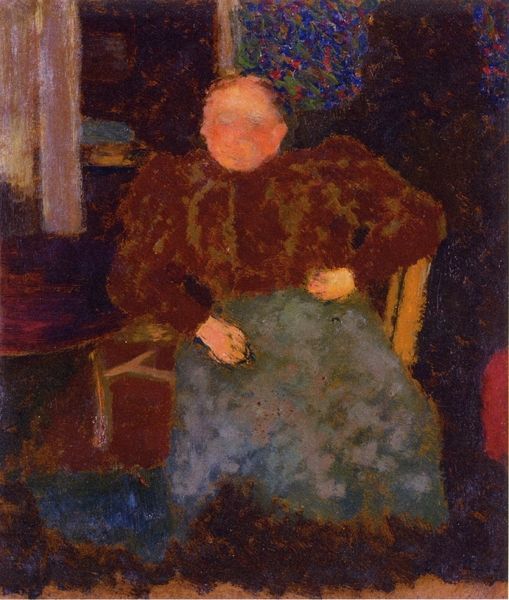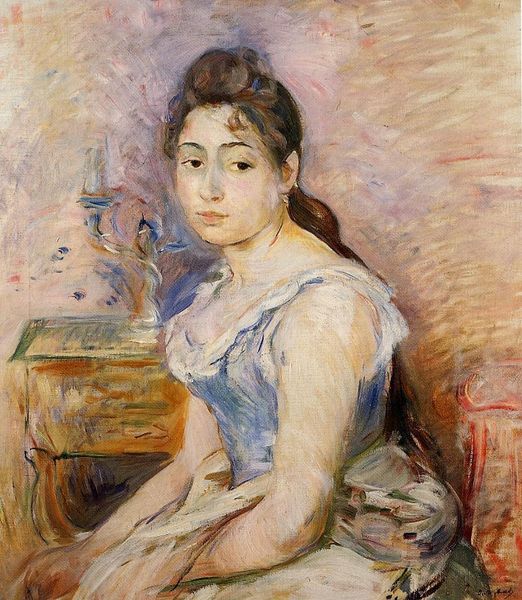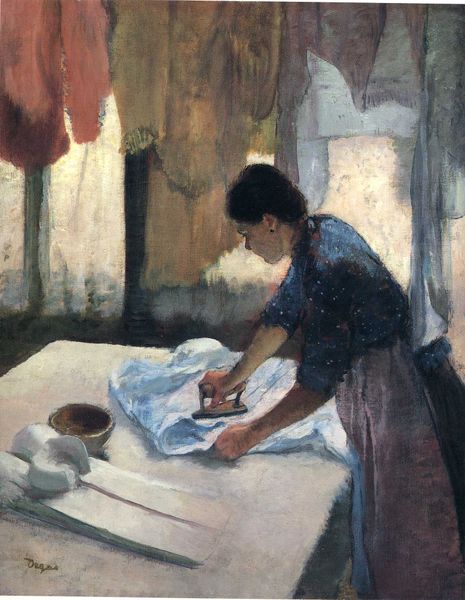
Copyright: Public Domain: Artvee
Editor: This is "Young Italian Woman at a Table" by Paul Cézanne, painted between 1895 and 1900, using oil on canvas. There's something so domestic yet melancholic about it. What jumps out at you about this painting? Curator: For me, it's about the very materiality of the paint and the textile. Look how Cézanne uses visible brushstrokes not to depict but to *construct* both the woman and the vibrant fabric. The pattern isn’t just representation; it's built, layer by layer. How does this approach, focusing on the "how" of the painting, change your perception of the “what”? Editor: It makes me think less about the woman’s emotion, and more about the process. Was Cézanne challenging the traditional role of the artist as purely a representational painter? Curator: Exactly! Think of the context: mass production was changing society, new industries emerging. Cézanne highlights the *labor* of painting, the physicality of it. He treats the painting like a constructed object rather than just a window onto reality. He invites the viewer to see how it’s made and what choices the artist has made. Do you see any tension there between the woman and the vibrant shawl and drapery in terms of process? Editor: Yes! Her pose and expression seem passively observed. Meanwhile the making of, the application of paint to, the fabric seems so assertive, as though its materiality holds greater significance. Curator: Precisely. Cézanne draws attention to painting's capacity as an art. The artifice gives the "Young Italian Woman" social context of how paintings were being produced at the time. Editor: So interesting! It shifts my focus from the subject to the very act of painting itself, highlighting its constructed nature. Curator: Yes, seeing the labor and material invests new meaning into his painting, disrupting those traditions. I've gained more appreciation for his pioneering way of making paintings as objects.
Comments
No comments
Be the first to comment and join the conversation on the ultimate creative platform.
